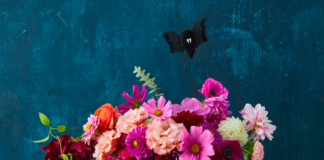
There’s no question that wood has long reined as the most popular of floor coverings, but it’s now enjoying a renaissance with new products, species, techniques, and “green” considerations. Let’s look at some of the basics of wood, and some exciting trends in this versatile flooring material.
Hard or Soft?
Woods are divided into hardwood and softwood according to their density and their ability to resist wear. Some of the most popular hardwoods for flooring include white oak, red oak, maple, beech, hickory, walnut, cherry, ash, and bamboo. These are prized for their hardness that won’t dent or scratch easily. Hardwood floors show all their wear in the surface, and can easily be refinished with a light sanding and reapplication of stain and varnish.
Softwoods however, will dent and scratch fairly easily, although some consider this wear part of their charm. Popular softwood floors include pine, cedar, hemlock and fir. These woods offer a richness and mellow tone that is prized for rustic applications such as a cabin or lodge. Softwoods also mellow into rich, warm colors, especially Douglas fir, which is highly regarded for its yellow to red spectrum as it ages. High traffic areas are not ideal for softwood, nor areas where heavy furniture will be placed or moved. And animals can wreak havoc with their nails on softwoods. Refinishing softwoods is also tricky as sanding machines can quickly create low spots unless constantly moved. There’s no doubt that softwoods are more work than hardwoods – but for many the authentic, rustic warm glow of the wood is worth it.
Better Living Through Science: Engineered Flooring
The most important recent breakthrough in the flooring industry is the introduction of engineered flooring. Engineered flooring uses a stable plywood base, and a surface laminate of the finish wood, such as oak, cherry, maple, etc. Because of the stability of the plywood base (made from several layers of wood laminates glued at perpendicular grain directions), there is little or no movement or warping, common to solid plank flooring. This feature is known as dimensional stability, and it gives the installer a much easier material to work with, since it will all install straight and true. What’s more, engineered flooring is often sold at much shorter lengths, (easier to transport and work with) since the butt joints (where two ends meet) will always line up straight without warpage. And because each piece is exactly the same depth, there won’t be the traditional dimensional “bump” where the ends meet.
Engineered flooring is almost always sold pre-finished, so once it’s installed, your done! And it can be installed traditionally with tongue and groove fitting and nailing, gluing directly to the sub floor, or some engineered floors feature a metal-tab “snap-fit” feature that allows you to “click” your new floor together. Engineered floors give the homeowner many new choices, such as installing directly onto the cement slab – which heretofore wasn’t advisable with non-stable plank flooring. And engineered flooring is suitable for use over a radiant heat floor, whereas traditional wood floors are not.
Reclaimed Wood Flooring
Another exciting trend in flooring is the emergence of reclaimed lumber being milled into flooring, either planks or engineered. Reclaimed lumber offers two distinct benefits: 1. It’s recycling old wood from barns and factories that would probably become landfill, and 2. This older lumber offers a richness and character that is impossible to find in new lumber. Among the favorites are old hemlock, Douglas fir, southern pine, and cypress. The grain, distress marks, and mellow tone of these woods is fantastic, offering a floor with character.
New World Order: Flooring from Around the Globe
As the world becomes flat, we’re seeing more exotic woods become commonplace in furniture and flooring. Species such as Brazilian Cherry, (Jatoba) Santos Mahogany, (Cabriuva), Brazilian Teak, (Cumaru), Bolivian Rosewood, (Tiete), Tigerwood, (Brazilian Koa), African Rosewood, (Bubinga), Ebony, Cork and Bamboo are showing up in flooring centers, and even some of the large home products mega-stores. While the prices are usually higher than domestically raised woods, the range of colors and styles makes exotic woods worth looking into for a truly special floor.
Green Floors: Eco-minded Materials
No industry is untouched by the worldwide imperative for environmental preservation and conservation, especially forestry. There are number of ways to satisfy your desire for a wood floor, while practicing environmental responsibility. Look for wood that has been grown and harvested in an earth-friendly way, such as selective harvesting or farmed wood. Bamboo is considered one of the “greener” flooring materials. Actually a species of grass, bamboo is an incredibly fast grower, and highly sustainable. There are a number of organizations dedicated to certifying wood products for sustainability: The Forest Stewardship Council (FSC), the Sustainable Forestry Initiative (SFI), the Canadian Standards Association (CSA) and the American Tree Farm System (ATFS). Of these, FSC is considered the most stringent in its certification procedure. Ask your dealer to guide you through his selection of environmentally sensitive wood flooring.
What Lurks Beneath?
Before you remove into your existing floor, it might pay to peel back the layers on top to see exactly what’s underneath. I’ve seen perfectly good oak flooring with carpet glued or tacked onto it, that you would never have suspected, and gorgeous, pre-war hardwood underneath 50’s linoleum. And in older homes, sometimes the sub floor is random length hardrock maple. Explore in a corner where you can dig down through the layers without creating an unsightly scar. When you find an interesting floor beneath, chances are it’ll be riddled with nail holes, or covered with linoleum adhesive. Don’t worry; the nail holes will add character once you’ve sanded and refinished the wood, and the linoleum adhesive – while difficult – can be removed through solvents, scraping and sanding. These older floors, brought back from the dead often add a unique charm and a bit of unexpected history to your home.






































